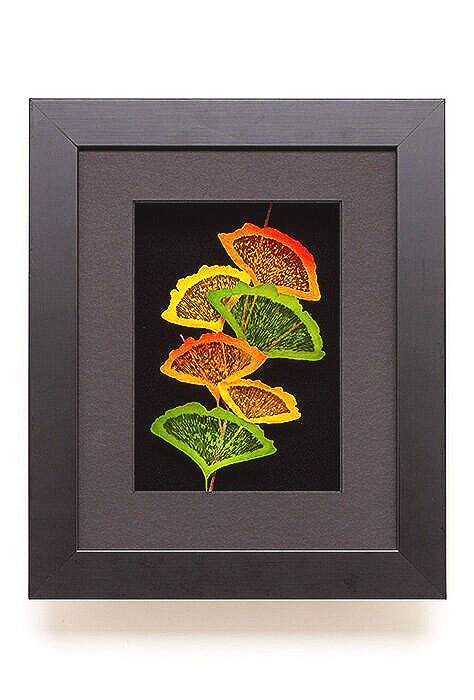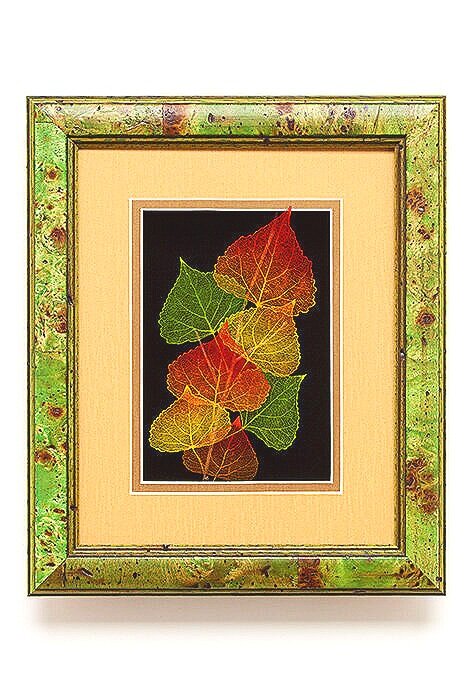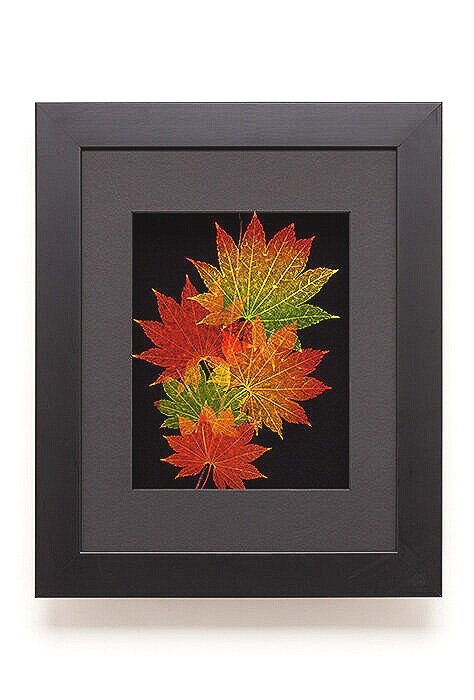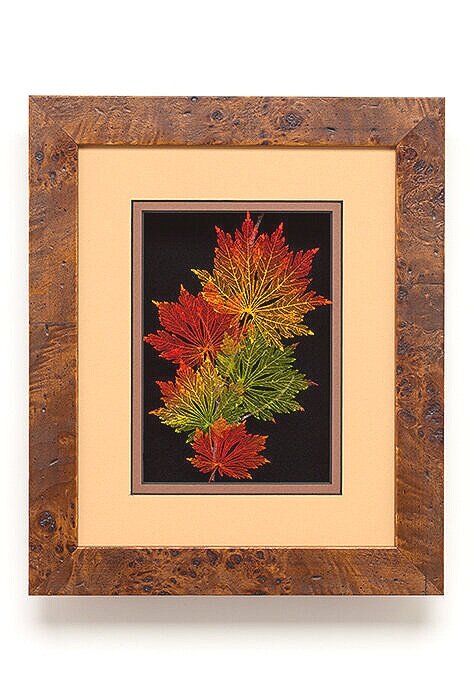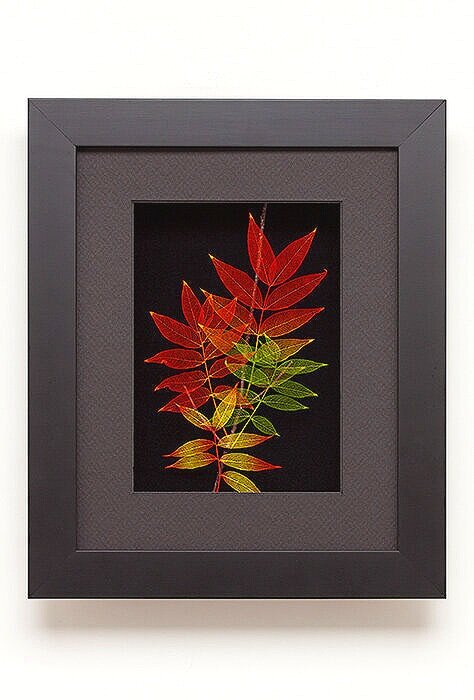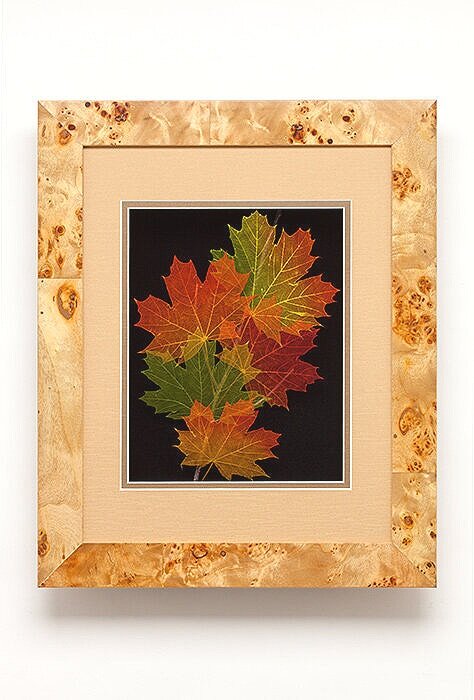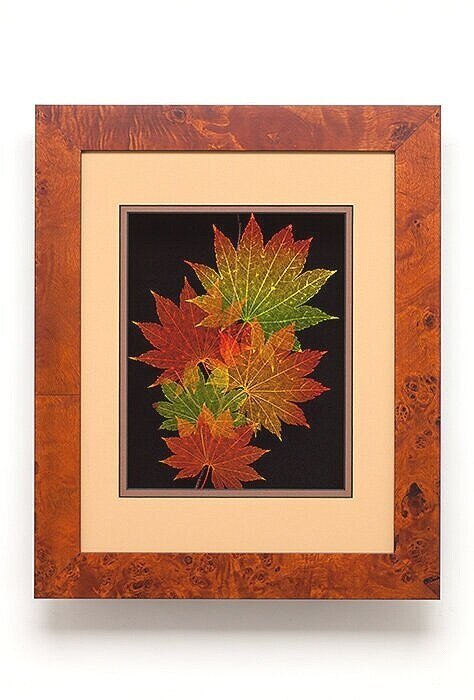Our Story began in 1993, when founder Booker Morey discovered a unique process of making certain tree leaves lacy. Since our humble beginning , each leaf has always been hand picked, and examined specifically for its particular shape. The leave is then led trough a secret process that brings to light, its inner skeletal body, typically hidden to the naked eye. The result is a unique leaf that has been infused with hues of color seen in natures own color pallet. A chosen group of leaves are then composed meticulously on a branch. Finally a elegant shadowbox frame is mounted, giving the viewer a three dimensional depth of view, bringing to life the leaves graceful beauty.
Frequently asked Questions
Are the leaves real?
Yes, each leaf is picked during summer or fall, and defect-free leaves are selected primarily for pleasing shape.
How are the leaves made?
Each leaf is etched, by hand and one leaf at a time. The exact process is a trade secret. Another name for the leaves with only the veins remaining is "skeletonized". Some insects and larvae can skeletonize leaves, and some leaves can decay to a skeleton state.
Can any leaves be treated? Can flowers be treated?
So far, only specific leaves respond to the treatment, and it is usually not obvious which will and which will not. Flowers can't be processed, mostly because there are a few, if any veins in the flowers. The veins must be more resistant to the treatment than the filling, or else everything is removed.
Are the colors real?
While the colors match real leaves as closely as possible, the colors are added. The reason is that the natural dyes-chlorophyll, xanthophyll (yellow) and anthocyanine (red) do not last very long in the light, and fade to a light brown. The added colors are more permanent. Most customers prefer to keep the colors as close to the purchased conditions as possible.
How are the leaves preserved?
The leaves have no preserving treatment except for the added color. No preservative is necessary to insure for a long life.
How long will they last? Will they deteriorate? Are they brittle and will they break in the frame?
Some leaves that we have made lacy like these are older than 16 years, so far with no apparent change. There are some skeletonized leaves in museums that are 100 to 200 years old. Think of the leaf veins as raw cotton. There is no specific limit to their lifetime if the leaves are kept dry. Likewise, the leaves are nor brittle, and have not become brittle in the past 16 years. Large changes in humidity can cause the leaves to curl some. This adds to their dimensionality, or can be re-flattened with a pinch using moist fingers on the leaves.

